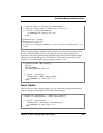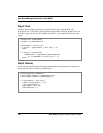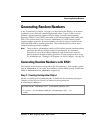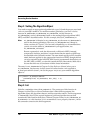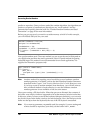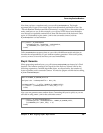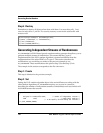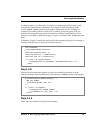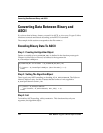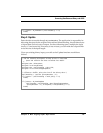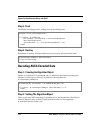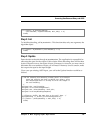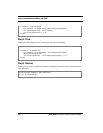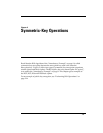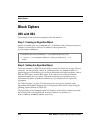
Chapter 5 Non-Cryptographic Operations 171
Generating Random Numbers
For this example, you will specify six streams of randomness, and provide a seed
stored in an
ITEM structure,
randomSeed
. The amount of seed data passed in the
A_X931_RANDOM_PARAMS structure must greater than or equal to 20 * (number of
streams) bytes and less than or equal to 64 * (number of streams) bytes. With six
streams, this means the seed size must be between 120 bytes and 384 bytes. If the
amount of seed data is outside this range, Crypto-C will return a
BE_ALGORITHM_INFO
error.
In addition, Crypto-C checks the seed value for the amount of entropy. For example, a
constant seed (all zeros or all ones) will return an error.
Step 3: Init
Once the structure has been passed in, the Init is essentially the same as in the
previous example. The only difference is that
AM_X931_RANDOM appears in the chooser.
Steps 4, 5, 6
These steps are identical to the previous example.
ITEM randomSeed;
A_X931_RANDOM_PARAMS x931Params;
x931Params.numberOfStreams = 6;
x931Params.seed.data = randomSeed.data;
x931Params.seed.len = randomSeed.len;
if ((status = B_SetAlgorithmInfo
(randomAlgorithm, AI_X931Random, (POINTER)&x931Params)) != 0)
break;
B_ALGORITHM_METHOD *RANDOM_CHOOSER[] = {
&AM_X931_RANDOM,
(B_ALGORITHM_METHOD *)NULL_PTR
};
if ((status = B_RandomInit
(randomAlgorithm, RANDOM_CHOOSER,
(A_SURRENDER_CTX *)NULL_PTR)) != 0)
break;



